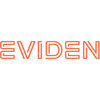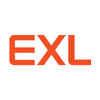

PwC





10+ PwC Senior Associate Interview Questions and Answers for Freshers
Q1. What are audit assertions?
Audit assertions are the claims made by management regarding the accuracy and completeness of financial statements.
Audit assertions are used by auditors to assess the risk of material misstatement in financial statements.
There are six types of audit assertions: existence, completeness, accuracy, valuation, rights and obligations, and presentation and disclosure.
For example, existence assertion refers to whether the assets and liabilities actually exist, while completeness ass...read more

Q2. What are the descripencies identify during your experinced IA client
Discrepancies identified during experienced IA client engagements
Identified discrepancies in financial statements such as misstatements or errors
Discovered inconsistencies in internal controls leading to potential risks
Uncovered discrepancies in inventory counts or valuation methods
Identified discrepancies in compliance with regulatory requirements
Found discrepancies in data analysis or reporting processes

Q3. what is Materiality?
Materiality refers to the significance or importance of information in relation to a company's financial statements.
Materiality is a concept used in accounting and auditing.
It helps determine what information is important enough to be included in financial statements.
Materiality is based on the amount or nature of the information and its impact on the financial statements.
For example, a $10,000 error in a company with $1 million in revenue may not be material, but the same er...read more

Q4. Breif about prior exprince in feild or IA
I have over 5 years of experience in the field of internal audit, working with various industries and conducting risk assessments, compliance audits, and process improvements.
Conducted risk assessments to identify potential areas of concern
Performed compliance audits to ensure adherence to regulations and policies
Implemented process improvements to enhance efficiency and effectiveness
Worked with diverse industries such as manufacturing, healthcare, and finance
Utilized data an...read more

Q5. Backend tables of all the frameworks
Backend tables of frameworks store data related to the application's functionality.
Backend tables in frameworks like Django, Ruby on Rails, and Laravel store data such as user information, posts, comments, etc.
These tables are designed based on the application's requirements and relationships between different entities.
Developers can interact with these tables using ORM (Object-Relational Mapping) tools to perform CRUD operations.
Proper indexing and normalization of tables ar...read more

Q6. How to calculate Net Debt
Net Debt is calculated by subtracting total cash and cash equivalents from total debt.
Net Debt = Total Debt - Total Cash and Cash Equivalents
Total Debt includes all forms of debt such as bank loans, bonds, and other liabilities
Total Cash and Cash Equivalents includes cash on hand, short-term investments, and other liquid assets
Net Debt is used to assess a company's financial health and ability to repay its debts

Q7. What are audit asserstions
Audit assertions are the claims made by management regarding the financial statements being audited.
Audit assertions include existence, completeness, valuation, rights and obligations, and presentation and disclosure.
They help auditors assess the accuracy and reliability of financial statements.
For example, existence assertion ensures that assets and liabilities actually exist at a given date.

Q8. What are audit assertion
Audit assertions are the claims made by management regarding the financial statements being audited.
Audit assertions include existence, completeness, valuation, rights and obligations, and presentation and disclosure.
They help auditors assess the accuracy and reliability of financial statements.
For example, existence assertion ensures that assets and liabilities actually exist, while completeness assertion ensures that all transactions are recorded.
Auditors test these asserti...read more


Q9. Professional skeptic used in audit
Professional skepticism is a critical mindset used in audit to question information and evidence.
Professional skepticism involves questioning the reliability of information provided by clients.
Auditors must remain independent and objective in their assessments.
Examples of professional skepticism include verifying financial data with third-party sources and challenging management's assumptions.
Auditors should not automatically accept information at face value but instead criti...read more

Q10. Proposed dividend?
The proposed dividend is currently under review and will be announced at a later date.
The company is currently reviewing its financials to determine the feasibility of a dividend payout
The decision on the proposed dividend will depend on various factors such as profitability, cash flow, and future growth prospects
The announcement of the proposed dividend will be made after the review process is complete

Q11. What is EPS and DPS
EPS stands for Earnings Per Share, a financial metric indicating the portion of a company's profit allocated to each outstanding share of common stock. DPS stands for Dividends Per Share, representing the total dividends paid out to shareholders per share of stock.
EPS is calculated by dividing the company's net income by the number of outstanding shares of common stock.
EPS is an important indicator of a company's profitability and is often used by investors to evaluate a comp...read more

Q12. Dih fsdf and it's operations
Dih fsdf is a company specializing in technology solutions and its operations involve software development and IT consulting.
Dih fsdf is known for its innovative software solutions.
The company offers IT consulting services to help businesses improve their technology infrastructure.
Dih fsdf's operations include software development for various industries such as healthcare, finance, and retail.

Q13. Explain Projects
Projects are unique endeavors with specific goals, timelines, and resources allocated to achieve desired outcomes.
Projects are temporary in nature, with a defined start and end date.
They have specific objectives and deliverables to be achieved within a set timeframe.
Projects require resources such as budget, team members, and materials to be allocated.
Project management methodologies like Agile or Waterfall are often used to plan, execute, and monitor progress.
Examples of pro...read more

More about working at PwC





Top HR Questions asked in PwC Senior Associate for Freshers
Interview Process at PwC Senior Associate for Freshers

Top Senior Associate Interview Questions from Similar Companies









Reviews
Interviews
Salaries
Users/Month












